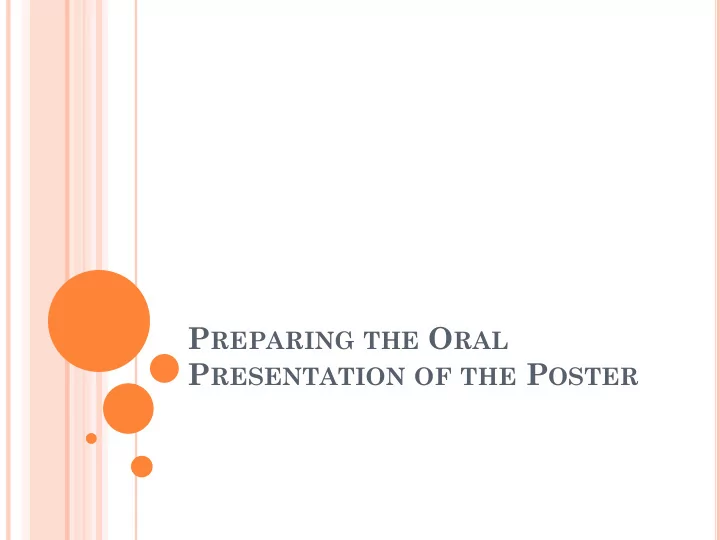

P REPARING THE O RAL P RESENTATION OF THE P OSTER
O RAL PRESENTATION OF POSTER Prepare a 2.5-5 minute “tour of the poster”, to present to evaluators or other interested visitors. Repeatedly rehearse your brief talk while timing it Try it with a practice audience. Emphasize the high points: Why is the issue important or interesting? What do the results mean? Be sure to briefly explain figures and graphs. If it is running too long, leave out some details, for your visitor to bring up, if interested in them. A pointer is recommended. This will help your audience to follow your talk. Do not speak too fast. Make eye contact. Articulate clearly in a conversational tone. Be prepared to answer any detailed questions. Suggestion: begin composing your talk by outlining your presentation.
F OR IMPACT ON A NON - SPECIALIST AUDIENCE : Emphasize why the issue or question is interesting or important (Why should I care?) Emphasize the upshot or possible implications of your study (So what might all this mean?)
H ANDOUTS ( OPTIONAL ) : It is a good idea to have copies (8.5” x 11" or 11" x 14") of your poster or a handout with the text of your poster to pass out to attendees who request it.
N ETWORKING : Be sure to visit some of the other posters and talks. One of the greatest advantages of poster presentations is the opportunity to network with students and faculty interested in your topic. (Optional) Have index cards (or calling cards) ready with your contact information to give to interested faculty. (Optional) Have a notebook, cards, etc. ready to collect contact information.
Recommend
More recommend